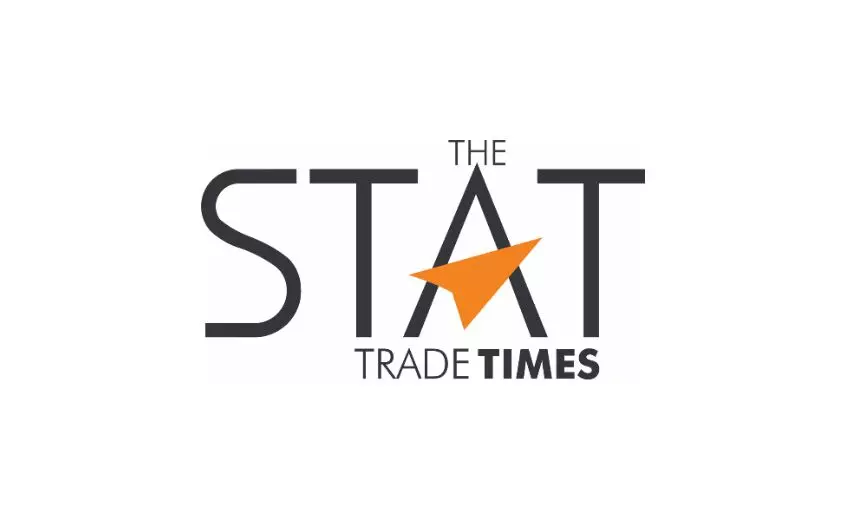
TAM Group adapts to Southeast Asia’s rise in US air cargo imports
TAM Group's resilience stems from diversification, human-centric service, and a commitment to building long-term relationships.

As shifting trade patterns reshape global air cargo flows, Southeast Asia has emerged as a vital growth engine. Vietnam, Thailand, and Malaysia are now outpacing China in US air cargo imports, driven by the rapid rise of SMEs and new exporters. TAM Group, a long-established player in cargo management, is adapting its strategy to this evolving landscape.
In an interview with The STAT Trade Times, Anindam Choudhury, VP Commercial at TAM Group, discusses how the company is aligning capacity and services to serve emerging exporters, strengthening resilience amid geopolitical disruptions, and investing in digitalisation to meet the region’s growing logistics demands.
With Vietnam, Thailand, and Malaysia outpacing China in US air cargo imports, how is TAM adjusting capacity and services for SMEs and new exporters
The shift in US air cargo imports from China to Vietnam, Thailand, and Malaysia is unmistakable. We, at TAM Group, have been closely tracking the shifting dynamics in Southeast Asia since COVID. To respond to this, we have been proactively expanding our operational footprint in these countries, adding new offices and strengthening partnerships with local carriers. We had also been proactively discussing with our partner carriers to adjust our capacity allocations to better serve the rise of SMEs and new exporters who are driving this growth as well as offering flexible booking windows, simplified documentation support, and dedicated customer service teams.
Our approach is highly customised; we work closely with each carrier to tailor solutions that fit their specific network and the unique needs of these emerging markets. This includes flexible cargo space management, optimised routing, and dedicated support structures that help new exporters navigate complexity and scale rapidly. We also leverage our regional expertise to facilitate smoother customs and regulatory processes, ensuring seamless access to global markets for smaller players.
How does TAM leverage partnerships and technology to ensure speed, reliability, and resilience for airlines amidst Red Sea disruptions and soaring e-commerce demand?
Red Sea disruptions and various ongoing geopolitical issues have underscored the need for agility. TAM has responded by diversifying trade lanes and enhancing multimodal connectivity, including strategic rerouting via Southeast Asia and Latin America. We collaborate closely with airlines and logistics partners to maintain agility, quickly rerouting cargo when traditional routes face interruptions. Our partnership with carriers like Saudia Cargo and China Cargo Airlines allows us to offer freighter services and pharma logistics even in volatile conditions. On the tech front, we have deployed AI-driven forecasting tools and predictive analytics to anticipate bottlenecks and dynamically adjust routing. This ensures speed and reliability even when traditional corridors falter.
Furthermore, our 24/7 customer service ensures that airlines and their clients receive immediate assistance, reinforcing trust and operational excellence amid soaring e-commerce demand.
With demand expected to outpace supply 6–10% in 2025, what investments has TAM made in Southeast Asia for digitalisation, flexible networks, and rapid response?
With demand projected to outpace supply by 6 to 10% in 2025, TAM had been making significant investments in its digital infrastructure and built agility in its systems. We have rolled out CRM systems, e-AWB adoption, and AI-powered pricing and planning tools. This digital foundation enables faster decision-making and rapid responses to market shifts. Operationally, we have diversified our network, expanding into new locations in SEA, adding new lanes, and strengthening regional hubs, especially in Vietnam, Malaysia, and Thailand, to support flexible cargo flows across continents. These investments align with Southeast Asia’s booming digital economy and e-commerce growth, enabling TAM to offer carriers and customers scalable, resilient service options tailored to evolving needs. These investments are not just about tech; they are about empowering our teams to deliver faster, smarter solutions across borders.
What sets TAM’s approach apart in crafting bespoke solutions for both legacy and emerging carriers in these growing markets?
At TAM Group, our ethos is deeply rooted in our motto that our Founder & Chairman, Dr Tam Wing Kun, had coined some 4 decades back, "Service with No Limits". This reflects our unwavering commitment to going beyond conventional boundaries to meet and exceed our customers’ needs, no matter how complex or dynamic the market environment becomes. What sets TAM Group apart from most players in the market is our “carrier-first philosophy”.
We don’t offer one-size-fits-all solutions. Whether it’s a legacy carrier with decades of history or a new entrant targeting a niche market, we build customised commercial strategies, market intelligence, and operational playbooks. Our work with Saudia Cargo Global is a prime example, a joint venture designed to expand freighter services and e-commerce logistics across the region. Each carrier benefits from our deep regional insights and flexible, scalable service models.
As Southeast Asia faces infrastructure and regulatory hurdles, how does TAM maintain resilience and a customer-centric focus through market shifts?
Southeast Asia’s infrastructure and regulatory landscape do present challenges, with each country or even city with its own nuances, but TAM thrives in this environment by staying close to the ground. We actively engage with regulatory bodies to stay ahead of compliance changes and help carriers adapt quickly. Through our regional offices and on-the-ground teams, we monitor market shifts in real time, ensuring our customers are never caught off guard. Resilience is also built through multi-modal solutions and alternative routing to mitigate any infrastructure constraints. Our 40 offices across 26 cities allow us to respond locally while thinking globally. Our 24/7 customer service teams support both carriers and shippers through regulatory changes, weather disruptions, and capacity crunches.
Our resilience stems from diversification, human-centric service, and a commitment to building long-term relationships. We don’t just move cargo; we build connections between continents, carriers, and communities.

